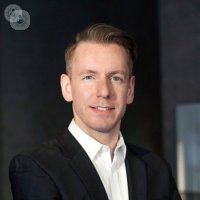Turbinate reduction: what to expect
Written in association with:What are turbinates in the nose?
The turbinates are structures on the side wall of the inside of the nose. They project into the nasal passages as ridges of tissue. The turbinates help to warm, moisturise and clean the air as it flows through the nose. The inferior turbinates can block nasal airflow when they are enlarged.

What causes enlarged turbinates?
Any acute and chronic irritation or inflammation, caused by factors such as pollution, weather and temperature changes, stress, fatigue, medications and hormone changes from thyroid disorders and pregnancy, can lead to swelling of the turbinates. In patients with a septal deviation, there is a bigger nasal cavity on the concave, and a smaller nasal cavity on the convex side of the deviation. This can lead to compensatory hyperplasia of the inferior turbinate on the concave side of the septal deviation causing further blockage to air flow.
What is turbinate reduction surgery?
The goals of turbinate surgery are to:
- Create more airspace by reducing volume of the inferior turbinates
- Maintain aerodynamic by maintaining the configuration of turbinates
- Not to destroy nasal function by maintaining the mucosal integrity
- Minimal complications such as empty nose syndrome, synechia, or bleeding.
This can be achieved by different techniques, which include:
- Change the position of the turbinate (outfracture)
- Reduction of the turbinates via resection (anterior turbinoplasty)
- Reduction of the turbinates via heat (direct or submucosally). This can be done with different techniques, including the use of Laser, monopolar, bipolar electric instruments, Celon and radiofrequency.
The decision as to which technique is used is made on an individual basis.
Is turbinate reduction permanent?
As we don't resect the turbinate totally in order to avoid unpleasant and difficult to treat complications, there is a risk of regrowth of the size of the turbinates to its original size. It is, however, always possible to redo surgery, if necessary. Large inferior turbinates can impair the nasal breathing and the quality of life, however, not having enough turbinate tissue leads to an empty nose syndrome, which has a significant negative effect on the patient.
How long does it take to recover from turbinate reduction?
It depends on the techniques used. With a strict post-surgery regime of short-term use of decongestive nasal spray and an antibiotic ointment, as well as a course of saline nasal douching for the first 6-8 weeks, the healing process is smooth. The risk of bleeding and pain is minimal.
If you are in need of turbinate surgery book now for a consultation with one of our specialists.


